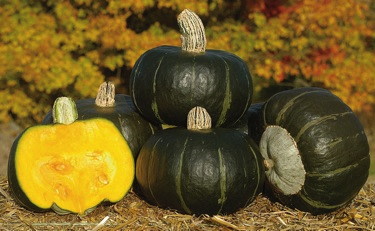

maxima Duchesne, C. moschata Duchesne, C. argyrosperma C. Huber and C. ficifolia Bouché. are often applied indiscriminately to different cultivated species of the New World genus Cucurbita L.

The common terms "pumpkin", "squash", "gourd", "cushaw", "ayote", "zapallo", "calabaza", etc. Handbook of Plant Breeding: Vegetables I. "Our Vegetable Travelers." The National Geographic Magazine. Nutritional value Winter squash, all varieties, raw Nutritional value per 100 g (3.5 oz) Most winter squash is harvested in September or October in the Northern Hemisphere, before the danger of heavy frosts.
#Bonbon buttercup squash skin#
It is harvested whenever the fruit has turned a deep, solid color and the skin is hard. Winter squash seeds germinate best when the soil temperature is 21 to 35 ☌ (70 to 95 ☏), with the warmer end of the range being optimal. Squash is a frost-tender plant meaning that the seeds do not germinate in cold soil. Since these species are normally cross-pollinated, it is now difficult to keep a variety pure. The calabazas of the West Indies and the forms grown by the people of Mexico and Central America are not uniform, pure varieties but extremely variable in size, shape, and color. They are grown extensively in tropical America, Japan, Northern Italy, and certain areas of the United States. Īlthough winter squashes are grown in many regions, they are relatively economically unimportant, with few exceptions. In New Zealand and Australian English, the term "pumpkin" generally refers to the broader category called "winter squash". Ĭultivars of winter squash that are round and orange are called pumpkins. The thick orange flesh has rich, creamy texture when cooked and bonbon sweet flavor. Winter squash is generally cooked before being eaten, and the skin or rind is not usually eaten as it is with summer squash. A classic buttercup with sweet-as-candy flavor and space-saving vines. At this stage, most varieties of this vegetable can be stored for use during the winter. They differ from summer squash in that they are harvested and eaten in the mature stage when their seeds within have matured fully and their skin has hardened into a tough rind. Looks like the perfect buttercup squash with smooth, deep green skin and a prominent gray 'button' at the base. Late-growing, less symmetrical, odd-shaped, rough or warty varieties, small to medium in size, but with long-keeping qualities and hard rinds, are usually called winter squash. Bonbon Treated (F1) Buttercup Squash Seed Product ID: 2996T Tasty, uniform, and high yielding. Winter squash is an annual fruit representing several squash species within the genus Cucurbita.


 0 kommentar(er)
0 kommentar(er)
